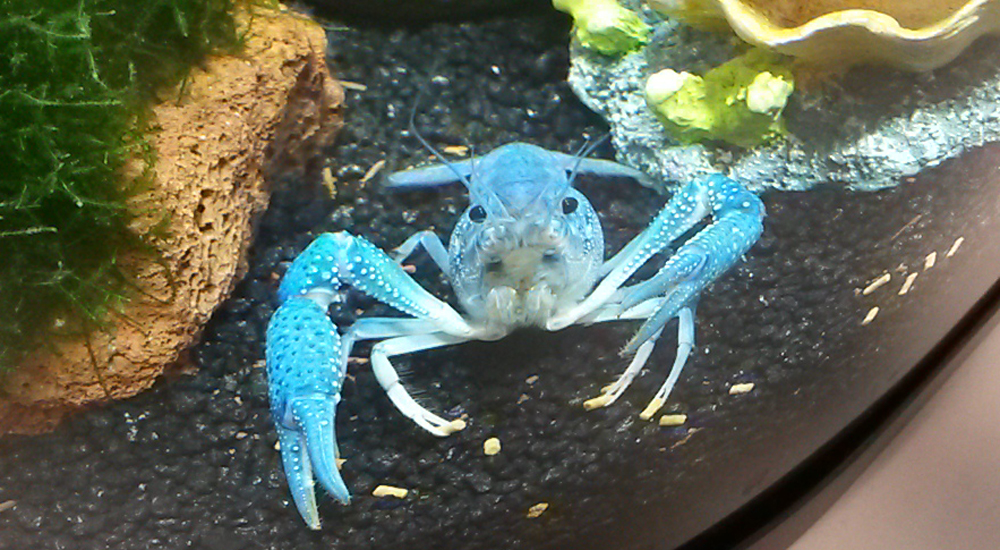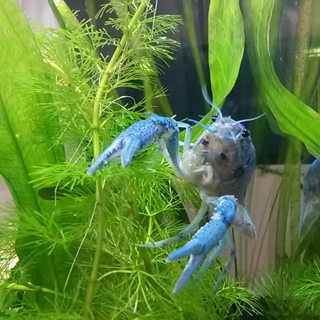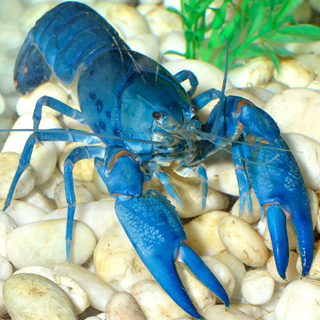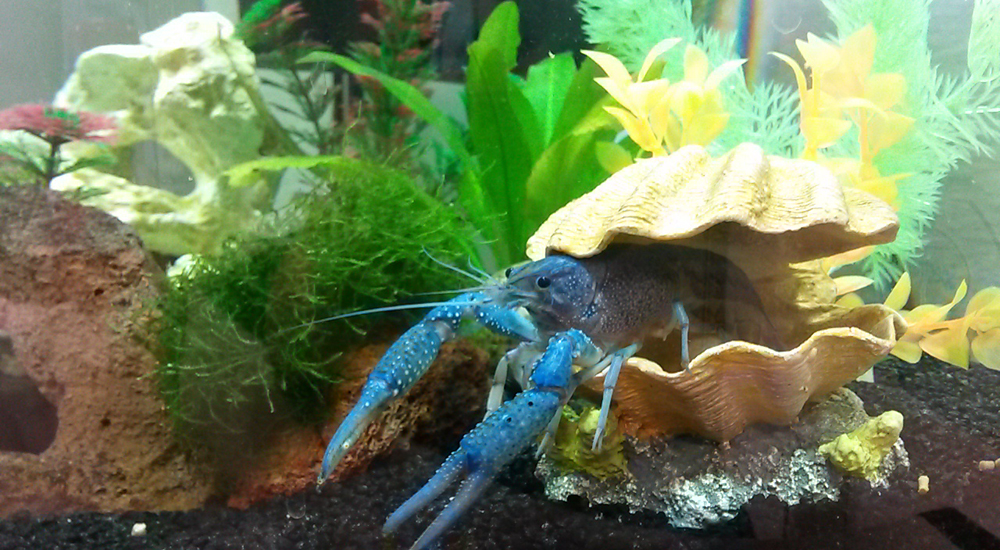Blue crayfish: a characterful crustacean
In eastern Florida, dull, brown crayfish scamper along the bed of the slow-flowing St. John River. From looking at this wild species of blue crayfish (Procambarus alleni) you may not necessarily see why so many aquarium owners are huge fans of this creature. However, there is also a bright blue version: created through breeding, this crayfish is wonderfully eye-catching and relatively easy to look after – although this is only possible in freshwater aquariums.
Non-fussy eaters
Despite it only living in fresh water, with its the elongated abdomen, four pairs of legs and two large claws, non-experts often mistake the blue crayfish for a small lobster. The crustacean uses its front legs and claws to catch and eat all sorts of tasty treats, such as delicate aquatic plants, dead foliage or carrion. In aquariums, the blue crayfish also likes to munch on peas or sliced carrots and cucumber.
If it manages to catch one, however, the blue crayfish is also happy to eat the occasional small fish. It is therefore a bad idea to put these in the same aquarium.

Armed mavericks
Like many crustaceans, blue crayfish are solitary creatures. They have their own territories with caves that they live in and rigorously defend against intruders. If you want to keep several blue crayfish in the same aquarium, you must therefore ensure that there is enough space and offer multiple caves in which the creatures can sleep and hide so that they do not start to fight.
If the blue crayfish feels threatened, it turns its claws towards the threat, ready to defend itself. If the threat appears too great, it tries to quickly fold up its abdomen and retreat backwards away from the danger.

The sensory world of the blue crayfish
The diurnal nature of these creatures makes it easy to observe them and their behaviour in aquariums. In doing so, it is interesting to know that their anatomical make-up has a number of special features. You can easily spot the two compound eyes, which help the crustaceans get an idea of their surroundings. They not only use their legs to get around but also to taste their food.
If you try to spot their ears, you will be searching in vain as these crustaceans instead use the skin between their joints to receive sound waves. They also have a striking pair of antennas, which they use to feel their way around to get a better picture of their surroundings. These furthermore have an organ at their base, which the crayfish use to release urine into the water.
Shedding their old skin
Like all crustaceans, the blue crayfish has an exoskeleton. This chitinous shell stores several minerals, including calcium, which make it strong. Although this outer shell protects the blue crayfish against predators, it also has a major disadvantage: in order to grow, the crayfish regularly has to shed its old shell. This is a critical period for the creature as it can get stuck in the old shell and die.
When the time comes to shed its shell, the crayfish eats far less and hides itself away. Eventually, the old shell breaks open off its back and the crustacean pumps itself full of water to strip off the old skin like a jumper. It accelerates the process using forceful strikes of its tail.
Soft-shell crabs need protection
The new shell is initially still soft and does not offer the blue crayfish the same level of protection it is used to from its ‘armour’. The delicate soft-shell crustaceans, as they are known at this stage, are easy prey. Even their fellow blue crayfish will attack them if given the opportunity. As soon as its legs are working again, the river crustacean therefore seeks protection by hiding or crawling up water plants.
By regularly shedding its shell, the blue crayfish can generally grow to between ten and twelve centimetres long – although ones with a length of 15 centimetres have also been seen.
Females go for smaller males
The blue crayfish reach sexual maturity far before they reach their full size; females start to be interested in the opposite sex from just 3.5 centimetres. In choosing a mate, one thing is particularly important: the chosen male must be smaller than the female if he wants to mate with her.
The mating process itself looks a little rough: to prevent injury, the male flips the female onto her back and pins her down with his claws. The couple can then lie stomach on stomach. The male now uses his sexual organ, known as a ‘gonopod’, to transfer his sperm into the female.
The female crustacean carries the fertilised eggs under her abdomen, where they develop into crayfish larvae under the protective care of the mother before becoming independent young crayfish. The beauty of this period is now over and the 50 to 100 mini crayfish have to be cautious of both their own parents and their siblings.


